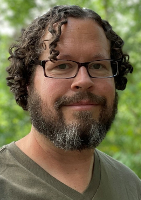
Image by judy mady
If we turn our minds to the spiritual and remain mindful throughout our day, our lives will become more joyful. We’ll find an increased sense of gratitude and contentment, and we’ll experience an ease and lightness in all we do. The Dao will begin to infuse our lives.
Now this isn’t to say we won’t have challenging events in our lives. The change won’t necessarily come in the events of our lives, in the things that happen to us, but in how we experience and respond to them.
We may find that once we begin responding differently to events, it may seem like there is less drama.We will still have problems, but we may no longer have a problem with our problems, so to speak.
We may find that instead of a knee-jerk type of reaction to things, we are able to experience things with a new sense of spaciousness and tranquility that we may not have been aware of before. We may find that our emotions are less chaotic and reactionary and that we can look at things with more clarity and insight and respond to them more appropriately. In many cases this may mean not responding to them at all. We can simply brush them off and keep moving.
Thinking of the Sacred - Walking Meditation
Sishen means to think of the sacred, the spiritual, or even gods or spirits. Nian can mean to think of, keep in mind, or even to recite or chant, as in chanting the scriptures. In Buddhist usage it most commonly refers to mindfulness and is also used this way in Daoist sources.
There is a section in Daoist liturgies that combines all these meanings into a single practice called zhuan tianzun. This is basically a type of circumambulation or walking meditation practice where the mantra-like incantation (shenzhou) of a shen (deity) or “Celestial Worthy” (tianzun) is recited as the practitioners walk slowly around the temple.
Sometimes this practice will snake around a courtyard in a large taiji or yin-yang pattern or be part of a procession. This method is said to come from Qiu Chuji, the founder of the Longmen (Dragon Gate) lineage who practiced this method while meditating in the Longmen caves that the lineage is named after.
In the Xuanmen Zaowan Tan Gongke Jing (Morning and Evening Recitations of the Mystery Gate Scripture) this practice is addressed to Leisheng Puhua Tianzun (sometimes called the Thunder Patriarch) in the morning practice and Taiyi Jiuku Tianzun (The Great One Who Saves from Suffering) in the evening.
The morning practices focus on purifying oneself and the evening practices focus on compassion for and purification of others, especially the dead. These shenzhou can also be recited silently to oneself during meditation or throughout the day and are a great way to “think of the spiritual and be mindful of the Dao.”
As it says in the scripture,
“The human heart-mind is scattered and disorderly,
a single thought (or focusing on one thing)
and it becomes pure and true.
Desiring to seek the highest Dao,
people circle around the Celestial Worthy.”
Walking Meditation Technique
The physical aspects of the walking meditation technique of zhuan tianzun are very simple. Just walk in a relaxed mindful manner, breathing deeply, slowly, and naturally. We can hold our hands together over our lower dantian, either flat against our belly or else in the ziwu handseal. This gesture is formed by touching the thumb and tip of the middle finger (wu point) of the right hand together to form a circle. The left thumb then is placed into the circle touching the base of the right ring finger (zi point) with the rest of the left hand cradling the right hand.
When you look down at your hands, they form a taiji tu or yin-yang symbol. The zi and wu points on the hands symbolize pure yin and pure yang returned to a state of original unity and this handseal can also be used in seated meditation and as a greeting when brought up in front of oneself in a bow.
The shenzhou recited for the Thunder Patriarch is Jiutian Yingyuan Leisheng Puhua Tianzun, which means “The Celestial Worthy of Universal Transformation Whose Voice of Thunder Resonates from the Origin of the Nine Heavens.” When we recite this shenzhou it can remind us of why we are following a spiritual path in the first place.
Cultivating Tao
Cultivating Dao is an alchemical process of transformation. First, we seek to transform our own body, speech, and mind, and then we help others transform themselves. At the heart of this change is a transformation of our perception of ourselves, other beings, and all phenomena.
As it says in the Scripture on Clarity and Stillness (Qingjing Jing), “To transform all sentient beings is called attaining the Dao. Only those who realize this can transmit the Dao of the sages.”
Copyright 2023. All Rights Reserved.
Adapted with permission of the publisher,
Inner Traditions International.
Article Source:
BOOK: The Hundred Remedies of the Tao
The Hundred Remedies of the Tao: Spiritual Wisdom for Interesting Times
by Gregory Ripley
 In modern Taoist practice, the emphasis is often on “going with the flow” (wu-wei) and not following any fixed rules of any kind. This may work well for an already enlightened Taoist Sage, but for the rest of us. As author and translator Gregory Ripley (Li Guan, ??) explains, the little-known 6th-century Taoist text called the Bai Yao Lu (Statutes of the Hundred Remedies) was created as a practical guide to what enlightened or sagely behavior looks like—and each of the 100 spiritual remedies are just as relevant today as they were when written over 1500 years ago.
In modern Taoist practice, the emphasis is often on “going with the flow” (wu-wei) and not following any fixed rules of any kind. This may work well for an already enlightened Taoist Sage, but for the rest of us. As author and translator Gregory Ripley (Li Guan, ??) explains, the little-known 6th-century Taoist text called the Bai Yao Lu (Statutes of the Hundred Remedies) was created as a practical guide to what enlightened or sagely behavior looks like—and each of the 100 spiritual remedies are just as relevant today as they were when written over 1500 years ago.
Both scholarly and inspirational, this guidebook to Taoist spiritual living will help you learn to effortlessly go with the flow, deepen your meditation practice, and find the natural balance in all things.
For more info and/or to order this book, click here. Also available as an Audible Audiobook and a Kindle edition.
 About the Author
About the Author
Gregory Ripley (Li Guan, ??) is a Taoist Priest in the 22nd generation of the Quanzhen Longmen tradition as well as a Nature and Forest Therapy Guide. He holds a bachelor’s degree in Asian studies from the University of Tennessee and a master’s degree in acupuncture from Northwestern Health Sciences University. He is also the author of Tao of Sustainability and Voice of the Elders.
Visit his website: GregoryRipley.com


























